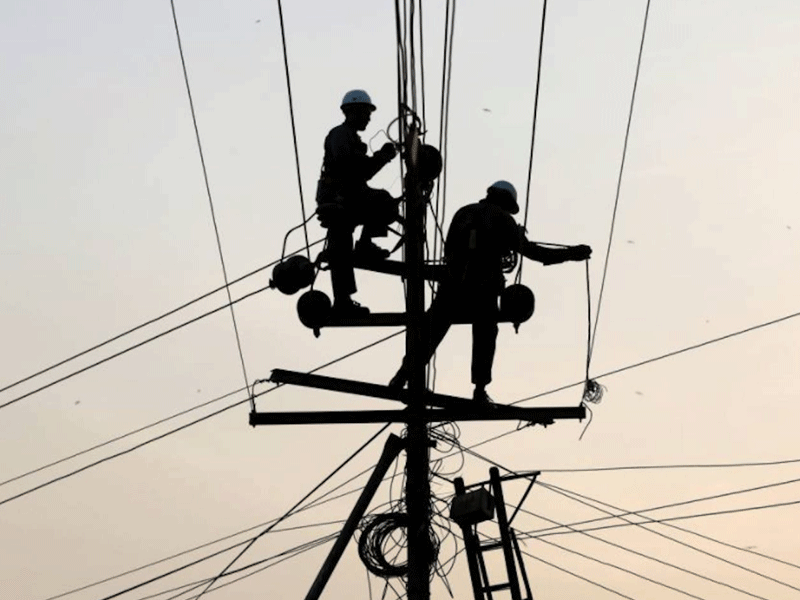Electricity consumers face dilemma

- 198
- 0
A recent report says that there is substantial increase in electricity production in recent months, but the irony is that due to unprecedented prices of electricity, the power consumers are in a fix and will not be able to reap the benefits of increasing production in power sector.
According to a media report, the PDM government added more than 3,000 MW of electricity to the national grid in its first year. Meanwhile, Prime Minister Shehbaz Sharif inaugurated five important power plants, which is a commendable step in the current situation, but the question is how to pay for the prices of the electricity bills which have registered an unprecedented increase in recent years.
Last year, during the summer season, the citizens faced four to eight hours of load shedding, the electricity shortfall was 7,200 MW while the total production was 20,000 MW. will continue to be imposed and the demand will increase from May to August. Currently, 42.3% of the total electricity production is obtained from oil and gas, 23% from water, 19.5% from coal, 7.7% from nuclear energy and 3% from wind and sun. The four per cent decline in national production that was caused by the stalling of the Neelum Jhelum hydraulic project last year will be restored from July 2023 after repairs. In the recent energy crisis, the country is facing major difficulties in the oil and gas sector, which is heavily dependent on its imports and foreign exchange availability.
According to an estimate, due to the high share of oil and gas in the production, the average price of electricity is 40 rupees per unit, but the domestic consumers are receiving 29 rupees. As per the agreement reached in recent days, this gap is likely to be closed in the current fiscal year, with low incomes and the highest inflation in history making it impossible for the common man to afford such electricity and government oil.
Ending dependence on gas is its only condition, while the end of electricity theft in the form of line losses is inevitable.
Meanwhile, newspapers reports say that China has been doing sizeable investment in the power sector in Pakistan, which is also a welcome move.
Pakistan is an important strategic partner for China in the region, an example of which is China’s billion-dollar project CPEC, which is an important milestone in promoting Pakistan’s economic development. Projects under the China-Pakistan Economic Corridor include upgrading the Gwadar port, energy, communication systems and industrial zones and progressing rapidly.
The construction of energy projects has accelerated since the launch of CPEC in Pakistan. Under the umbrella of CPEC, China’s investment in Pakistan has reached 21 billion dollars. This investment is in the energy sector, which includes the electricity of a power house in Gwadar which runs on coal. It has been proposed to the Chinese government to set up a coal-fired plant.
According to available data, Pakistan’s annual energy import bill is $27 billion and it should urgently switch to solar to overcome the alarming current account deficit. , there is a need to develop alternative local sources of energy including wind, hydel and nuclear. The government is considering gradually shifting the country’s coal-fired power plants to Thar coal, aiming to end dependence on expensive imported coal.
Chinese investment in energy sector under CPEC can be termed as a great gift for Pakistan. China is also playing its role to solve Pakistan’s financial crisis. In these stages of economic and financial crisis, China’s contribution to Pakistan, which is almost equal to the IMF installment, is a proof of China’s selfless friendship.
Meanwhile the power consumers both domestic and industrial have welcome the increase in production of electricity in the country, but they said that the rising prices of electricity are still an issue and due to it the cost of living has increased for the domestic consumers while the industrial consumers are also in a fix as the rising prices have resulted in increase of cost of production.
It may be recalled here in February last, the government announced a formidable increase in electricity prices ranging from Rs3.3 to Rs15.52 per unit for domestic users, farmers and industrial consumers including exporters to raise an additional Rs237 billion in four months but experts say that despite this move, the circular debt will increase to Rs2.37 trillion.
Again in February last, the Power distribution companies (DISCOs) had asked the National Electric Power Regulatory Authority (NEPRA) to let it allow to collect over Rs 17 billion from the electricity consumers under the 2nd quarterly adjustment of FY 2022-23 which has added to the woes of power consumers, who are already running from pillar to post to pay for the electricity bills.
Meanwhile, the analysts say that costly energy has triggered unemployment and has also hit the exporters who are unable to meet their export targets due to rising cost of production and doing businesses in the wake of unprecedented price hike including the prices of electricity and other energy sources.
Federation of Pakistan Chambers of Commerce and Industry (FPCCI) representative are also critical of the hike in fuel and power rates and have termed this increase to result in unleashing a historical economic stagnation which may lead a good number of industrialists to the verge of bankruptcies, defaults on account of power bills.
They say that electricity is available right now, but due to increases in power the industrialists are in a fix on how to afford it, they appealed to government to come up with mechanism so that the industry can be saved for the larger national interest.
Published in The Daily National Courier, May, 01 2023
Like Business on Facebook, follow @DailyNCourier on Twitter to stay informed and join in the conversation.

















































